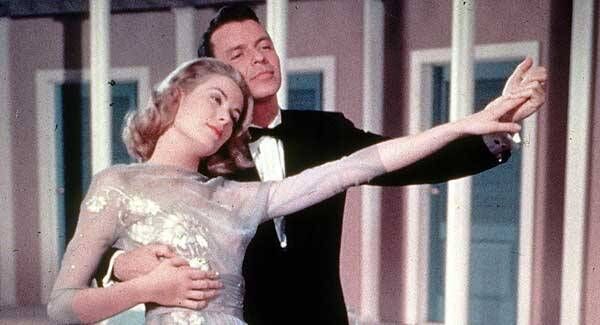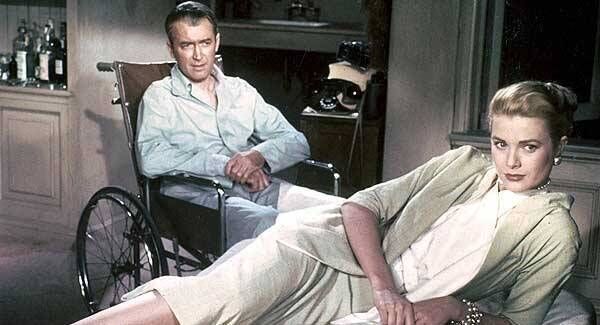The mystery of miscasting for new Grace Kelly biopic

GRACE OF MONACO was first scheduled for release at the end of November 2013, then it was re-scheduled for March, before being pulled from the release schedule indefinitely. Finally it was announced that the film would open the 2014 Cannes Film Festival next month, playing out of competition.
Apart from the scheduling issues, there’s one very obvious problem with the new biopic of Grace Kelly — she is unmistakably Nicole Kidman. It’s very hard to be Grace Kelly when you are Nicole Kidman, because you are, well, Nicole Kidman. Not Grace Kelly.

We the viewers are meant to see a patrician princess, instead we see an icy Aussie. It’s not that Kidman is not a good actor, or that she cannot do elegant, imperious, or fairytale — it’s just that she is embedded in our brains as herself, rather than anyone else.
She cannot become Grace Kelly the way, say, Michael Douglas became Liberace. She is just too Kidman. Absurdly, Tim Roth plays Prince Rainier — while still far more of a character actor than his starry lead, you forever associate him with blood, guns, and Tarantino.
Miscasting aside, the other problem with Grace Of Monaco that it has been indefinitely shelved by its US distributors, after a reported major falling out between its director and movie mogul Harvey Weinstein.
The director, Olivier Dahan, says there now exists two versions of the film — his and Weinstein’s.
Dahan, speaking in fury last month to a French newspaper, calls the situation “catastrophic”. Already postponed twice already, the movie-going public will now have to wait until the Cannes Film Festival in May for its premiere, instead of the film going on general release mid March, as planned.
Oh, and members of the royal family in Monaco aren’t too impressed with the project either. Prince Albert II, Princess Caroline, and Princess Stephanie called a series of scenes “purely fictional”, as a statement released by the house of Grimaldi spells out: “The royal family wishes to stress that this film in no way constitutes a biopic. It recounts one rewritten and needlessly glamorised page in the history of Monaco and its family with both major historical inaccuracies and a series of purely fictional scenes.”

Yikes. The film centres around a short period in 1962 when there was political tension between France and Monaco, and how this impacted on Grace Kelly as a person and a royal figurehead; think A Week With Marilyn, where the movie zooms in to have a closer look at specific time in the life of an icon. Except Grace Kelly was perceived very, very differently from Marilyn Monroe.
One was a seen as a highly sexualised ditzy blonde, the other more sexually demure — the truth seems to have been that while Marilyn was significantly the more intellectual of the two, it was Kelly whose sexual appetites were apparently greater. Neither reality suited their public personas, and so were largely ignored.
Marilyn publicly remained a ditz, Grace Kelly more professionally virginal.
In terms of life events, Grace Kelly’s trajectory was more similar to that of Diana Spencer’s.
Elegant, blonde, expensive-looking, married to a prince, lived at a palace, gave birth to more princes — and princesses — before dying unexpectedly in a car crash — their stories are oddly similar, Kelly’s car crash preceding Diana’s by 15 years in 1982, a year after Diana married her prince and started a new public fairytale that would also later end in tragedy.

Grace Kelly was not, however, born an aristocrat. Another subheading of her story could be The Prince And The Showgirl — she was Hollywood royalty, rather than anything blue blooded.
Yet her enduring image is one of dignity, refinement, and high-end style, with her demure 1950s Dior New Look, her trademark Hermes bag (the Kelly, named in her honour), and her perfect silhouette of shapely hair and shapely body. With her white gloves and cinched waist, she embodied refined good taste.
The reality was something quite different, however. Grace Kelly was not the ice maiden audiences saw on screen in her brief but significant film career. Such was her acting skills that she was cast by Alfred Hitchcock, forever fascinated with a certain type of blonde froideur, in several lead roles: Rear Window, Dial M for Murder and To Catch A Thief.
But her glacial reserve was an act — in real life, she was rumoured to have had hot affairs with a host of her leading men — Gary Cooper, Cary Grant, Clark Gable, Ray Milland, James Stewart, Bing Crosby, William Holden, as well as a fling with married movie director Fred Zinnemann, who directed High Noon, her first major movie in 1952. Hollywood gossip columnist Hedda Hopper even called her as a “nymphomaniac” — that bizarre old-fashioned word used to denigrate women who enjoy sex — at one stage.

Which made the sudden transition to princess of a small stuffy European principality all the more stark, when you consider the sexual freedom enjoyed by Kelly in Hollywood. Once she relocated to Monaco in 1956 with her new husband, Prince Rainier III, her career ended abruptly.
She was no longer Grace Kelly, but Princess Grace of Monaco — Her Serene Highness, no less.
Rainier banned her movies from being shown in Monaco on the grounds that this would be undignified, and did not wish for her to ever work again as an actress. She complied, because she was happy with her new royal role.
When Hitchcock offered her the lead in Marnie, she turned him down (it went to Tippi Hedren instead). She never made another movie.
Princess Grace of Monaco started life in Philadelphia in 1929, the daughter of a wealthy industrialist whose parents had come to America from Co Mayo.
She accessed acting via modelling, appearing in her first film, 14 Hours, in 1951, after attending the American Academy of Dramatic Art in New York City.
After moving to Hollywood, she achieved success when she received an Oscar nomination for her role in Mogambo, in which she starred with Clark Gable. It was then that she was noticed by Hitchcock. She went on to win a Golden Globe and an Oscar for Best Actress in her role as Country Girl in 1954, and in 1956 was voted the Golden Globe’s favourite actress.
At the height of her success, she withdrew from it all and went in self imposed exile to Monaco with her rather old-fashioned prince. There she embraced motherhood, happily rearing her three children against a cloistered backdrop of wealth and privilege.
She eschewed her racy past, and was even known to disapprove of women wearing trousers.
Her popularity both in the principality and abroad remained high, however, as she embodied such classic princessy attributes as style, discretion, loyalty, and, well, grace.
Until one day in 1982, when the car she and her then 17-year-old daughter Stephanie was travelling in, careered off a cliff.
Stephanie was physically unhurt, but her mother died in hospital the next day.
The world was shocked — just as it would be with the death of Diana — by an event which kickstarted our ongoing fascination with the life of a woman who seemed a mass of contradictions behind the mask of cool blonde perfection. Cinema audiences may think they knew Grace Kelly, but she remains as much a mystery now as she ever was.
Family reservations aside, to describe Grace of Monaco as a ‘biopic’ sounds very ambitious indeed.











